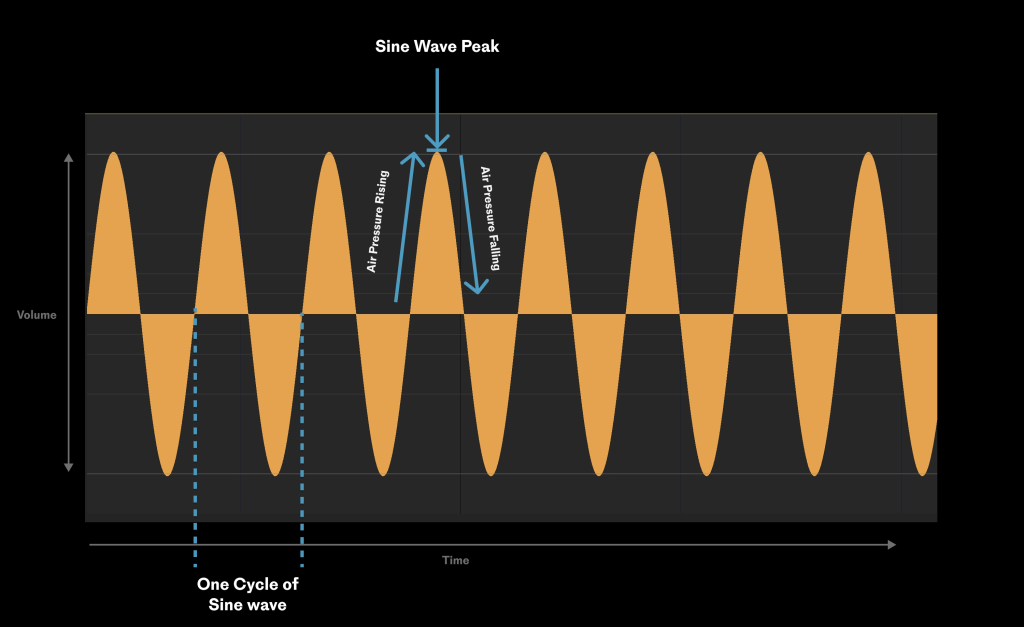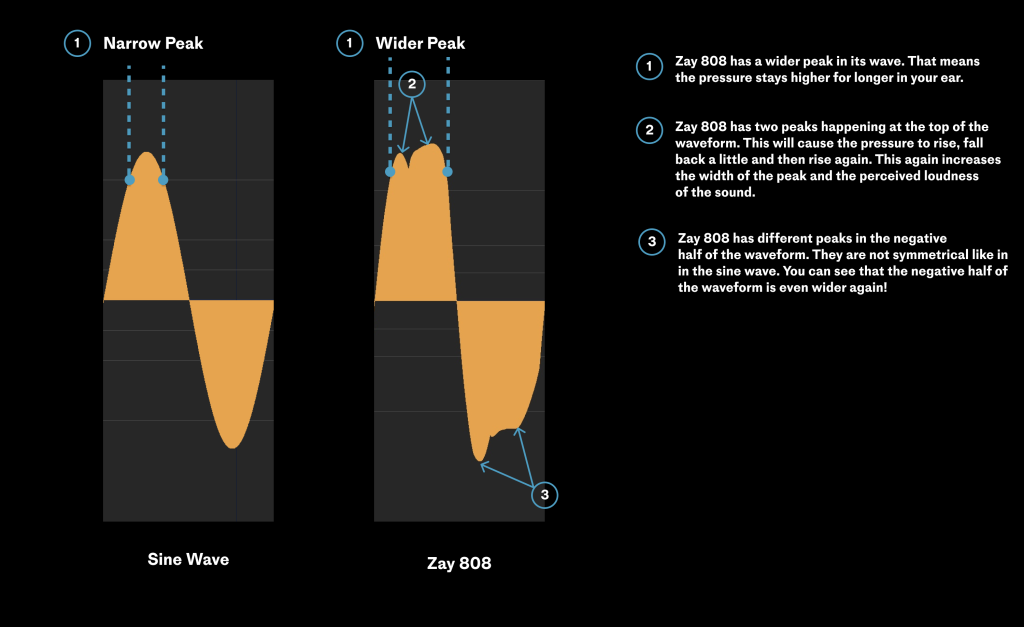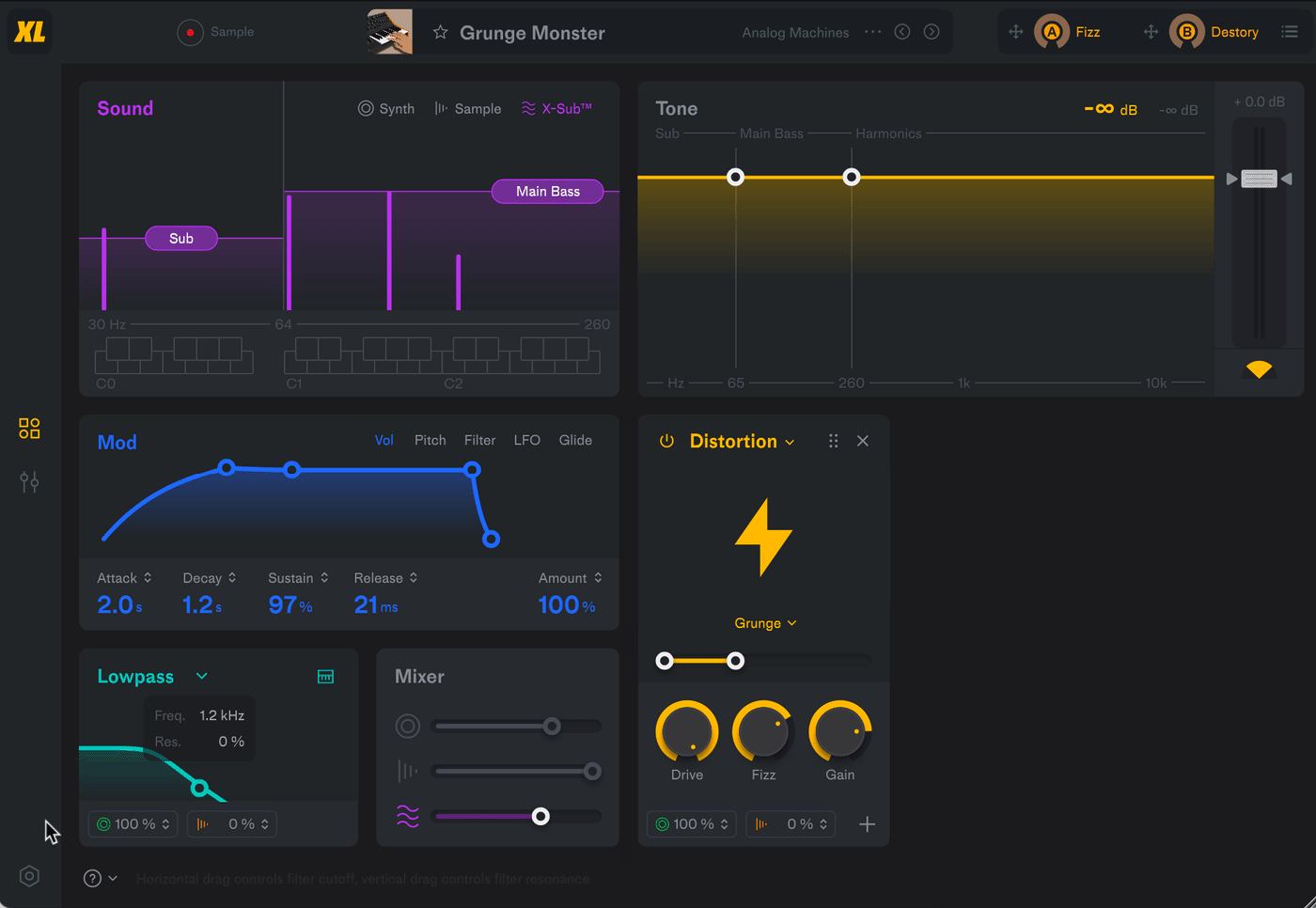Spoiler: we’ve made this technique super easy for you with our latest SubLab XL update. Keep reading to find out how.
It’s all in the waveform.
Producer and all-around bass music expert Mr. Bill uploaded this video to his Youtube channel, which has racked up tons of views. Here he describes a new technique for designing sub-bass that he learned from fellow bass music producer CopyCatt. We’ll call this Mr. Bill’s CopyCatt technique from here on.
The concept behind the CopyCatt technique is that rather than thinking about your sub-bass as different frequencies on a spectrum and tuning it via a spectroscope, you instead start thinking about how your sub’s waveform changes in volume over time and use an oscilloscope when sound designing.
YouTube.
As Mr. Bill explains in his video, you can optimize your waveforms by making their peaks wider. The wider the peaks are, the louder your ear will perceive the sound, even if its volume is not actually louder.
The key concept here is perceived loudness. Due to how our hearing works, even if two sounds have the same volume, one may seem subjectively louder.
What Mr. Bill is describing is a totally new way to think about your sub-bass; Look at the waveform on an oscilloscope and watch how wide the peaks of your sub-bass are. The wider the peak is, the louder the ear perceives the sound.
Another benefit of this trick is that if you achieve subjectively louder sub-bass with this technique, then you can lower the volume of your sub-bass while still hearing it in the mix. Thus giving more headroom for other elements.
Wide Wave Peaks? 🤔
To fully wrap our heads around what Mr. Bill is getting at with the CopyCatt technique, let’s first dive deeper into what happens when SubLab XL plays a sine wave.
If we look at a sine on an oscilloscope, we see the orange waveform rising up, peaking, and then falling back down over and over again:

These rising and falling waves created inside SubLab XL are turned into electrical signals by your sound card, which causes your speaker to move its paper cone back and forth. As the speaker cone moves forward, it pushes a wave of increasing air pressure through the room and into your ear. Likewise, as the speaker cone moves backward in sync with the sine wave, so does the pressure in your ear.

This rising and falling air pressure in our ears, all happens in sync with the waveform made in SubLab XL, is how our brain perceives a pitched sound.
The faster the speaker moves back and forth, the higher the pitch of the sound we hear.
If we were to measure how many times the waveform goes up and down in a second, we would have its Hz value. So, for example, a sub-bass sine wave at 30 Hz goes up and down 30 times in one second.
Here comes the key part. Since we now know each time our synth’s waveform rises, it causes air pressure to increase in our ears, Mr. Bill suggests that by adjusting how long the waveform peaks, we can affect the perceived loudness. Another way to think of this is that the wider the peak, the longer the pressure stays at a higher level in your ear, thus increasing the perceived loudness of that sound.
Comparing Waveforms.
So now that we have an understanding of the CopyCatt technique, let’s take the concept and apply it to the classic Zay 808. Below you can see a comparison of the Zay 808 with a basic sine wave. Check out the audio recordings as well so you can hear what each sounds like.

We first notice that the Zay 808 has a wider peak. Intuitively, this means that the air pressure created by the speaker that travels to your ear stays higher for longer, thus increasing the perceived loudness.
Additionally, we see two peaks in the Zay 808…again you would imagine that the air pressure increases, dips, and then increases again, which would also affect the perceived loudness of the sound.
The Zay 808 is also asymmetrical; the waveform’s top half is different from the lower half. This means that the way the air pressure changes is different when it increases compared to when it decreases.
Listening to the audio samples, the Zay 808 sounds louder, even though the two waveforms have the same objective volume.
That’s perceived loudness in action.
Putting theory into practice 🔐
Now that we have the theory down, how can we apply this to our own subs?
The short answer is that we have just added a button in SubLab XL to do it automatically for you, which we’ll get to. The long answer is also pretty simple: Phase Shifting.
Think of it this way; To create this magical wide peak and asymmetric waveform, you start with two sine waves at the same frequency and volume. Then you just shift one forward in time. That way, the peaks of the two sine waves will happen at slightly different times, creating a wide waveform peak. You can go further by adding in more harmonics at different phase shifts.

To make all of this super simple, we’ve added a new experimental feature to SubLab XL. This applies Mr. Bill’s CopyCatt technique automatically to X-Sub’s waveform.
🔑 To turn it on, just go to Settings → Audio Settings and turn the “Optimize X-Sub Phase” on.
You can also play around with the X-Sub controls to create tons of subs that follow this Copycatt technique.

Above, you can see X-Sub with Optimize X-Sub Phase turned on side-by-side with a simple sine wave. You can see all the features of this waveform that Mr. Bill describes.
Again, like the Zay 808, X-Sub is perceived louder than the sine wave, even if they both have the same objectively measured volume.
So, download the latest update and play around with this new feature.
Side note: This is an experimental feature in SubLab XL, and we’d love your feedback. Leave us a comment if you have any questions or want to get even deeper into this technique. This is a different way to think about sub-bass sound design and it is open to subjective interpretation.






